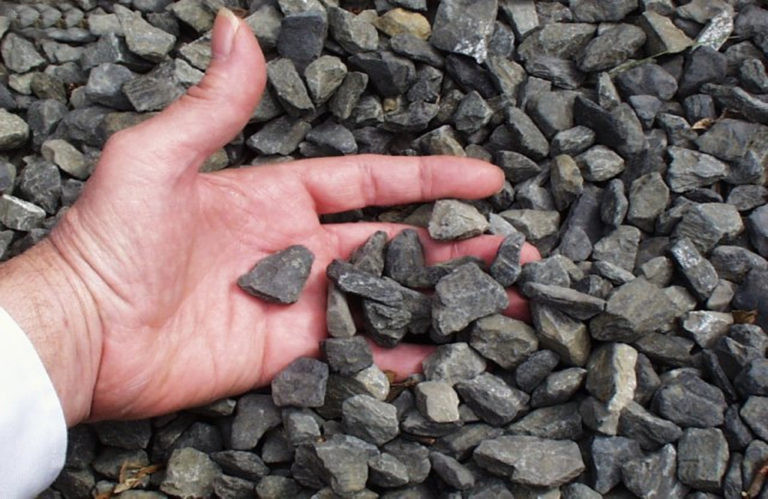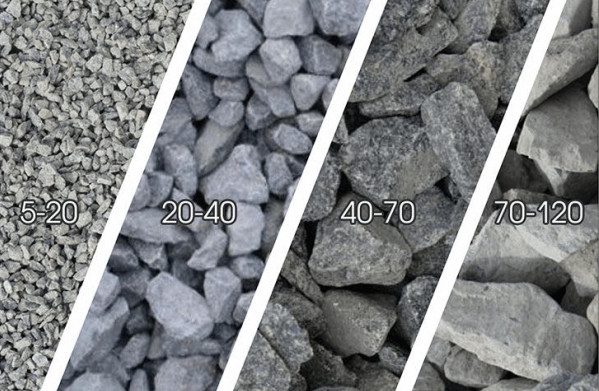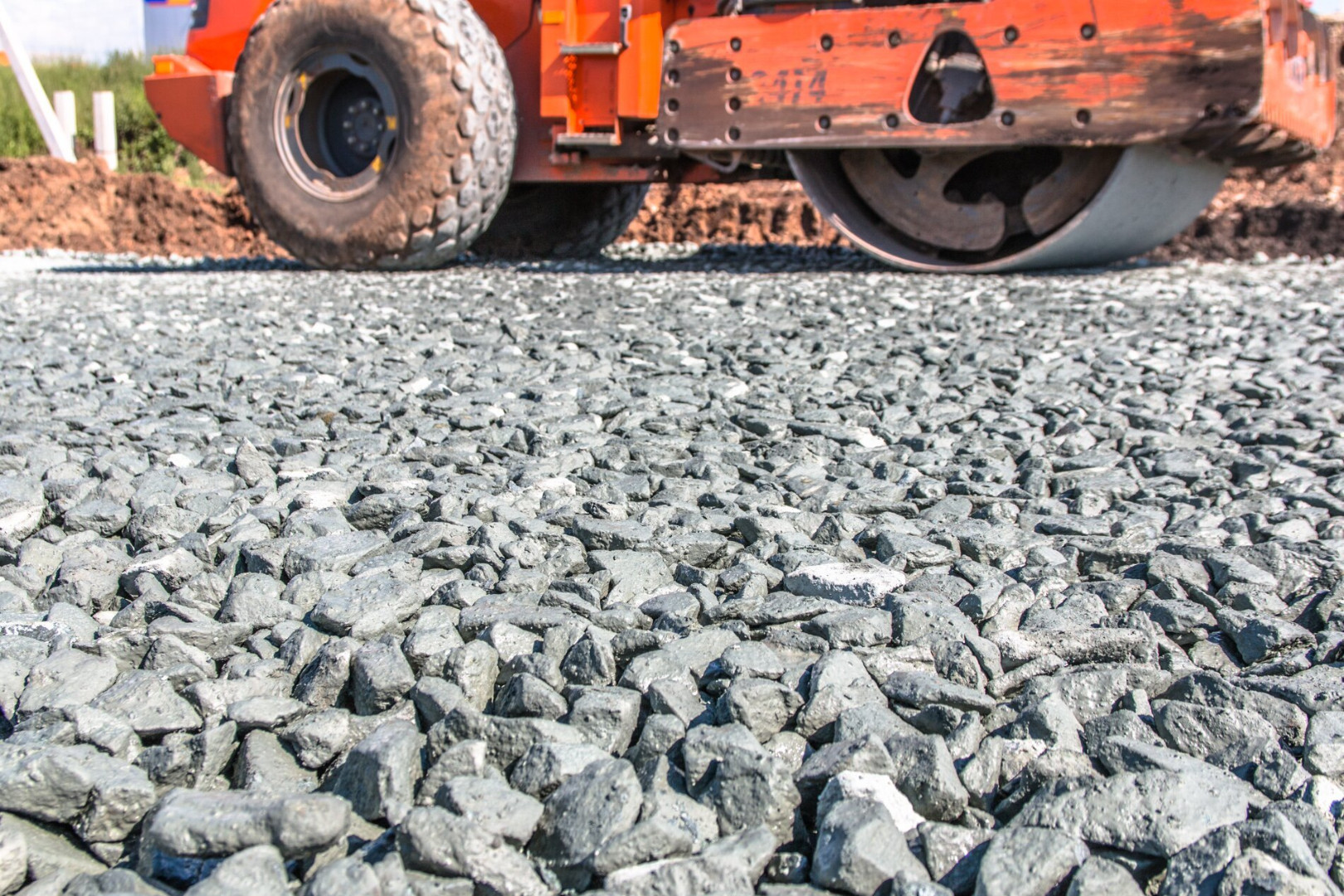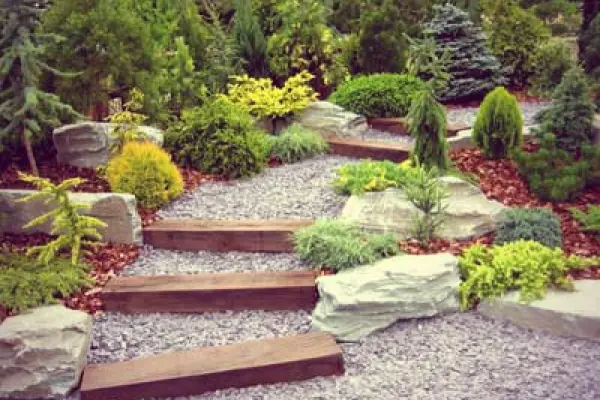Granite crushed stone stands out among construction materials due to its exceptional characteristics and the widest range of applications. Have you ever wondered why this particular material is chosen for the most critical structures? With strength up to M1400 and resistance to more than 300 freezing cycles, it has become indispensable in modern construction. In 2023, global exports of granite crushed stone reached an impressive $150 million! It's no wonder that it's used everywhere: from the foundations of skyscrapers to decorative garden paths. What other advantages does it hide?
Granite crushed stone is obtained by crushing igneous rocks with a granular structure. It's not always easy to find a material equally suitable for both industrial construction and landscape design. But granite crushed stone is precisely that. This versatile building material combines durability, aesthetics, and eco-friendliness, making its use a rational solution in a wide variety of projects.
Main Properties and Characteristics of Granite Crushed Stone
 Before examining the areas of granite crushed stone usage, it's important to understand what properties this material possesses. Frankly, for many developers, the characteristics of granite crushed stone become the decisive factor when choosing a building material.
Before examining the areas of granite crushed stone usage, it's important to understand what properties this material possesses. Frankly, for many developers, the characteristics of granite crushed stone become the decisive factor when choosing a building material.
Granite is one of the strongest rocks on the planet. Crushed stone made from it inherits this quality, demonstrating impressive resistance to mechanical loads. When visiting construction sites in Kyiv, I noticed that foremen especially value its high frost resistance and moisture resistance. These properties are critically important for regions with changeable climates.
When choosing granite crushed stone, pay attention to its strength grade. For critical structures such as bridges or high-rise buildings, I recommend choosing material with a grade not lower than M1200. Also, make sure that the crushed stone corresponds to class I radioactivity (up to 370 Bq/kg) if it is intended for residential construction.
The key characteristics of granite crushed stone are:
- High strength (grades from M800 to M1400)
- Excellent frost resistance (up to F300)
- Low water absorption (less than 0.5%)
- Density 1320-1520 kg/m³
- Hardness on the Mohs scale 6-7 units
- Flakiness (content of lamellar and needle-shaped grains)
- Radioactivity (class I or II)
The specific weight of granite crushed stone is approximately 1410-1520 kg/m³, making it 17% heavier than limestone. This density ensures high stability of structures using this material. The grain composition of granite crushed stone also affects its performance qualities, determining the homogeneity of the material and its resistance to shrinkage.
Fractions of Granite Crushed Stone and Their Applications
 The fraction of granite crushed stone is a key parameter when choosing material for specific tasks. It determines the grain size and directly affects the sphere of use. Last season, I encountered a situation where an incorrectly selected fraction led to the redoing of the entire drainage layer. It was an expensive lesson!
The fraction of granite crushed stone is a key parameter when choosing material for specific tasks. It determines the grain size and directly affects the sphere of use. Last season, I encountered a situation where an incorrectly selected fraction led to the redoing of the entire drainage layer. It was an expensive lesson!
Each fraction has its specific application. From dust-like screenings to large stones — all of them find their place in various construction and decorative projects.
| Fraction | Size (mm) | Main Application | Features |
|---|---|---|---|
| Screenings | 0-5 | Decorative filling, anti-ice treatment, concrete additive | Contains up to 25% dust particles |
| Small | 5-20 | Production of concrete, reinforced concrete, asphalt concrete mixtures | Practically contains no dust particles |
| Medium | 20-40 | Drainage systems, foundations, road construction | Optimal for filtration layers |
| Large | 40-70 | Foundations for high-category roads, gabion structures | Maximum strength and durability |
| Extra large | 70-150 | Railway ballast, shore reinforcement | Used in particularly critical structures |
The table demonstrates how diverse the application of granite crushed stone can be depending on the fraction. When choosing, it's important to consider not only the size but also the shape of the grains, as cubic granite crushed stone provides better adhesion and structural stability.
Areas of Granite Crushed Stone Usage in Construction
Did you know that modern construction is impossible to imagine without this amazing material? Granite crushed stone in construction is used everywhere due to its exceptional physical and mechanical properties. It's like a Swiss knife in a builder's arsenal — universal and reliable. Let's look at the main directions of its application.
Granite Crushed Stone for Road Construction
 The use of granite crushed stone in road construction is one of the most extensive directions for utilizing this material. Did you know that over 40% of all granite crushed stone mined worldwide goes precisely to road construction? Its high strength and resistance to abrasion make it indispensable for creating durable road surfaces.
The use of granite crushed stone in road construction is one of the most extensive directions for utilizing this material. Did you know that over 40% of all granite crushed stone mined worldwide goes precisely to road construction? Its high strength and resistance to abrasion make it indispensable for creating durable road surfaces.
For federal highways, fractions of 20-40 and 40-70 mm are usually used, which provide maximum resistance to loads. The shape of the grains is of great importance — cubic with minimal flakiness is preferred.
In 2018, during the construction of the Norwegian highway E39 in the Stavanger region, granite crushed stone of fraction 20-40 mm became a key material. It was chosen for its strength (M1400) and frost resistance (F300), which was critical for the harsh Scandinavian climate. Today, 7 years later, the road fully withstands loads of up to 100 tons without the need for repairs. Small fractions of granite crushed stone were also used for decorative filling of roadside areas, which gave the route an aesthetic appearance and made the project an example of sustainable construction, as the material was extracted from local quarries, minimizing transport emissions.
Granite Crushed Stone in Bridge Building and Road Construction
Bridge construction imposes special requirements on building materials. Granite crushed stone in bridge construction is used to create high-strength concrete structures subject to extreme loads. During my work on the reconstruction of the Podilsky Bridge, I was convinced that replacing even 10% of the crushed stone with another type of material significantly reduces the strength characteristics of concrete.
For bridge structures, the optimal fractions are 5-20 mm, which ensure maximum density of the concrete mixture. Preference is given to cubic granite crushed stone with minimal flakiness and high adhesion indicators of granite crushed stone with cement mortar. In 2024, the average cost of granite crushed stone per ton for bridge construction work was about $28-35 depending on the region.
Granite crushed stone in asphalt concrete also demonstrates excellent results. Asphalt concrete mixtures based on granite crushed stone are characterized by increased wear resistance, which is critically important for road sections with heavy traffic. Small fractions (5-10 mm) are used for the upper layers of the coating, and medium ones (10-20 mm) for the lower layers and foundation.
Granite Crushed Stone for Foundations and Industrial Construction
 When constructing foundations, granite crushed stone is used to create a cushion that distributes the load and drains moisture. For these purposes, fractions of 20-40 mm are usually chosen. They provide the ideal balance of strength and drainage properties. Quality material must meet high requirements for dynamic properties, especially in the case of high-strength concrete mixtures.
When constructing foundations, granite crushed stone is used to create a cushion that distributes the load and drains moisture. For these purposes, fractions of 20-40 mm are usually chosen. They provide the ideal balance of strength and drainage properties. Quality material must meet high requirements for dynamic properties, especially in the case of high-strength concrete mixtures.
Granite crushed stone in industrial construction finds the widest application due to its resistance to aggressive environments and mechanical impacts. The bulk density of granite crushed stone allows creating the strongest foundations for heavy industrial equipment. In my experience, when designing workshops with high vibration loads, choosing crushed stone with flakiness less than 15% significantly increases the service life of concrete foundations.
Industrial floors, machine foundations, supports for bridge cranes — everywhere requires material of the highest quality. The optimal choice for such structures is granite crushed stone from the manufacturer with a strength grade not lower than M1200 and frost resistance F300. Such material can be ordered in bulk directly from quarries, which significantly reduces the final cost of construction.
Granite Crushed Stone for Concrete
Production of high-strength concrete is impossible to imagine without granite crushed stone. Fractions of 5-20 mm are ideal for creating concrete mixtures with a strength grade from B25 and higher. Wedging of granite crushed stone during concrete mixture laying allows achieving the most dense structure and increasing the strength characteristics of the finished structure.
Granite crushed stone provides concrete with:
- Increased strength
- Durability
- Resistance to deformations
- Low abrasion
The adhesion coefficient of granite crushed stone with cement mortar reaches 0.81-0.88, which guarantees high reliability of concrete structures. In the production of reinforced concrete products, this indicator is of critical importance for safety. Suppliers of granite crushed stone usually specify this characteristic in quality certificates.
Granite Crushed Stone for Railway Tracks
A special niche is occupied by the use of granite crushed stone in the construction of railway tracks. Special fractions of 25-60 mm are used here, forming a ballast prism. Such material must meet the highest requirements for strength and frost resistance.
Granite crushed stone in railway construction performs several functions at once:
- Distributes the load from the rolling stock
- Provides drainage of tracks
- Softens vibrations from passing trains
- Stabilizes the rail grid
Granite Crushed Stone for Paving and Urban Improvement
Granite crushed stone for paving has become a real trend in modern landscape design. It is visually attractive. It is durable. It is capable of withstanding serious loads and maintaining its original appearance for decades.
The most common way of use is the creation of decorative paths and areas by the method of dry paving. When visiting the Urban Landscape Expo, I was impressed by the variety of design solutions using granite screenings of the 0-5 mm fraction in combination with large slabs of the same material. Such combinations create a stunning visual effect and simultaneously provide reliable coverage.
Granite crushed stone in urban improvement is used everywhere — from the design of pedestrian zones to the creation of modern public spaces. The sale of granite crushed stone for these purposes is often carried out in specialized bags of 25-50 kg, which simplifies transportation and storage of the material. By the way, many architects note that granite chips of light shades visually expand the space, making it lighter and airier.
Another interesting trend in urban improvement is the use of eco-paving with filling the cells with granite screenings. This solution is like breathing for the urban environment — it allows the soil to "breathe" and promotes natural drainage while providing a strong surface for pedestrian traffic.
Application of Granite Crushed Stone in Landscape Design
 Have you ever thought about what can turn an ordinary garden into a work of art? Granite crushed stone in landscape design opens up a whole world of possibilities. It's not just a functional material — it's a key decorative element capable of transforming any space.
Have you ever thought about what can turn an ordinary garden into a work of art? Granite crushed stone in landscape design opens up a whole world of possibilities. It's not just a functional material — it's a key decorative element capable of transforming any space.
Screenings and small fractions of granite crushed stone 5-10 mm have become a real trend in modern landscape design. They are used to create effective garden paths, Japanese gardens, rock gardens, and dry streams. Last year at the landscape design exhibition in Barcelona, I noticed that almost 70% of the presented projects included elements with granite crushed stone of different shades.
The variety of colors of granite crushed stone — from classic gray to exquisite pinkish and rich red shades — allows designers to implement the boldest concepts. The material is incredibly resistant to fading and retains its original appearance for decades.
Innovative Solutions with Granite Crushed Stone
One of the most practical applications of granite crushed stone in modern landscape design is gabion structures. Imagine: metal mesh boxes filled with stone transform into stylish fences, retaining walls, or even garden furniture! Such structures are not only aesthetically attractive but also exceptionally functional.
Here are several popular ways to use granite crushed stone in landscape design:
- Mulching tree and shrub trunk circles
- Creating contrasting color zones in minimalist gardens
- Installing drainage systems around pools and patios
- Filling gabion structures to create fences and partitions
- Designing the shores of artificial water bodies
- Creating dry gardens in Japanese style
- Decorative filling of roofs and exploited terraces
When creating landscape compositions with granite crushed stone, use geotextile to separate layers. This will prevent weed growth and the mixing of crushed stone with soil. To create the most natural effect, combine fractions of different sizes and shades — nature doesn't like monotony! And don't forget about contrasts: dark granite crushed stone effectively highlights light plants, and light crushed stone creates a winning background for rich greenery.
Advantages of Granite Crushed Stone Compared to Other Materials
Comparison of gravel and granite crushed stone shows that the latter has a number of competitive advantages. By the way, many consumers confuse these materials, although they have significant differences in origin and properties.
The differences between granite and limestone crushed stone are also quite significant, especially in the context of durability and resistance to aggressive environments.
| Characteristic | Granite Crushed Stone | Limestone Crushed Stone | Gravel Crushed Stone |
|---|---|---|---|
| Strength | M800-M1400 | M400-M800 | M600-M1000 |
| Frost resistance | F300 | F50-F100 | F150-F200 |
| Density (kg/m³) | 1410-1520 | 1200-1300 | 1300-1400 |
| Resistance to chemical influences | High | Low | Medium |
| Price (relative) | High | Low | Medium |
The comparison clearly demonstrates why granite crushed stone remains the preferred choice for critical structures and durable buildings, despite its higher cost. Its performance characteristics significantly exceed the indicators of alternative materials.
Environmental Aspects of Using Granite Crushed Stone
The eco-friendliness of granite crushed stone makes it a preferred choice for sustainable construction. This material is like a natural filter for the construction ecosystem: it doesn't emit harmful substances and can be completely recycled for reuse.
With the right selection of the radioactivity class of granite crushed stone (class I), the material is absolutely safe for use even in residential construction. This is an important advantage for projects focused on environmental certification. Notably, granite crushed stone in bags is often used in small-scale eco-projects where precise dosing of material without waste is important.
Types of granite crushed stone differ not only in fractions but also in environmental characteristics. At one of the sites in the Lviv region, we faced the need to select crushed stone with minimal radiation background for a children's center. The solution was granite crushed stone from quarries in the Zhytomyr region with a radioactivity indicator of no more than 200 Bq/kg, which is significantly lower than the allowable norms.
Conclusion
Granite crushed stone, due to its exceptional properties, remains an indispensable material in modern construction and landscape design. Are you convinced of how diverse the application of granite crushed stone is? From powerful foundations to elegant garden compositions — this material proves its versatility through decades of impeccable service.
The right choice of fraction and characteristics of granite crushed stone in accordance with specific tasks allows achieving maximum efficiency and durability of structures. Despite the higher cost compared to some alternative materials, investments in quality granite crushed stone pay off through a long service life and minimal maintenance costs.
When choosing a supplier of granite crushed stone, pay attention to the availability of quality certificates and the compliance of the material with GOST requirements. This guarantees that the crushed stone you purchase fully corresponds to the stated characteristics and will provide the expected result in your project.

